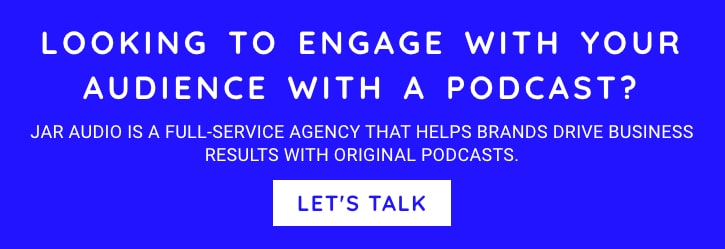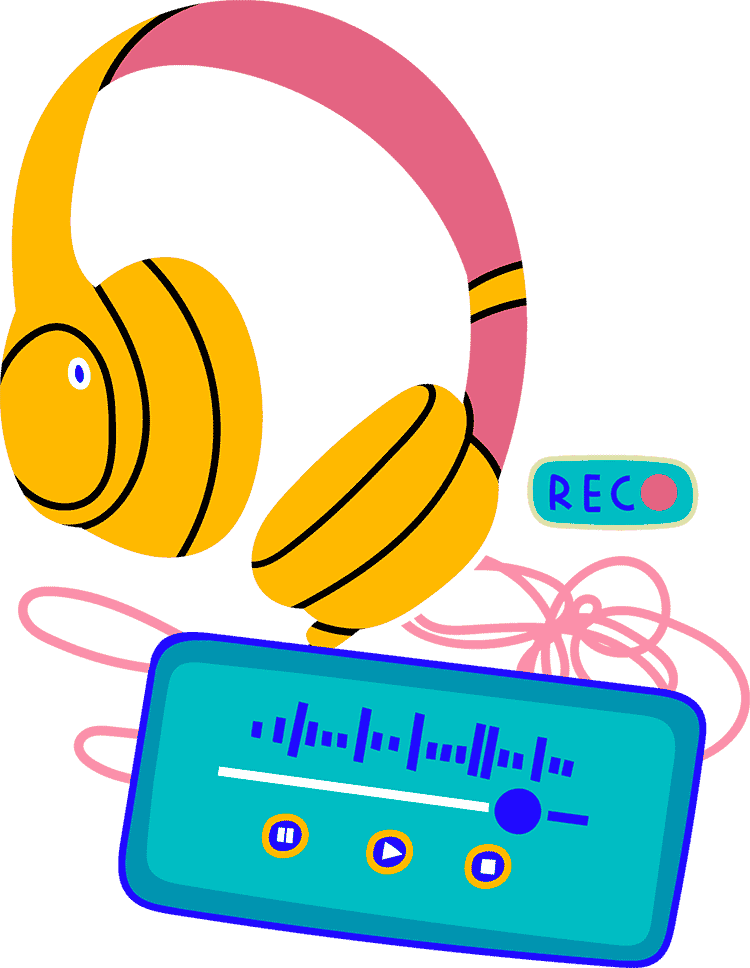Because sometimes “you say it best, when you say nothing at all.”
Leonardo Da Vinci once said that “nothing strengthens authority so much as silence,” and it looks like he was onto something.
If you’re reading this post, you probably live in an absolute sea of sound — thanks in part to devices like your phone, TV, smart speaker, and laptop.
Auditory chaos is the new normal, and it’s just about impossible to avoid that.
Sure, you can leave your phone at home, you can try to protect your quiet time and mute all your devices…
But with the prevalence of tech today, you’re usually met with pings, dings, and chimes regardless — nevermind the hum of traffic, air con, and major appliances.
Because of this, the absence of sound is one of the most impactful tools you can use to transform any audio experience.
Below, we take a deep dive into the power of silence, and explore how your team can use it for an impactful, immersive, and memorable corporate podcast production.

The people that get it
Spend an hour among humans and one thing is clear — when it comes to our audio output, we’re all pretty different.
On the louder end of the spectrum, we have ultra-chatty folks and noise polluters.
These people tend to attract a lot of attention at first, but at a certain point, we start to tune them out.
Sure, the class clown is engaging when we meet them, but eventually we realize not everything they say is of value…
And in contrast, you’ve probably met the kind of person that leverages silence in their day-to-day interactions.
This person commands attention when they open their mouths simply because they’re so selective. At the end of the day, they are a testament to knowing when to keep quiet.
Yes, a podcast is all about output. It is talk audio, afterall…
But if you’re going for maximum impact, you might want to take some hints from the selective speaker, and make space for silence in your branded content.

Real podcast examples
To give you a better idea of how your team might use selective silence, let’s take a closer look at some real corporate podcasts.
First off, we have Mobile Diaries, a show from telecommunications giant T-Mobile that explores the ongoing relationship between humanity and tech.
In this segment of an episode exploring mental health, silence is used to convey the gravity of the topic at hand.
Trigger warning: this clip touches on the topic of suicide.
Fireweed — a BCIT podcast produced by JAR Audio — also uses silence for maximum impact.
In the clip below, our sound editor Patrick Emile pulled back on sound effects, knowing this was a case where the speaker should be the primary focus.
He also included two (relatively) long windows of total silence to guide the listener into, and out of this totally immersive podcast segment.

Silence in other spaces
Silence also has massive power in spaces that aren’t generally considered sound aware.
In this clip from Expedia’s Out Travel The System, host Nisreene Atassi speaks with cruise ship captain Kate McCue, who describes the profound peace of quarantining on an ultra-quiet cruise ship.
There are also experiences designed entirely around silence, like sensory deprivation tanks, now marketed to the public as a way to foster mental and physical well being.
Or the centuries-old practice of silent dinners, which include no verbal interaction whatsoever.
It’s clear from these examples that silence is a truly powerful, totally transformative tool — that works in the audio realm, and well beyond.

The right amount of silence
When it comes to using silence — or removing sound — from your own show, there are a few things you should keep in mind.
First off, the amount of silence you use is important. End the quiet too soon and it won’t have an impact. Go too far and you’ll just confuse your audience.
Here’s how things tend to break down…
-
300 milliseconds is the normal space between words
-
500 milliseconds is the standard pause after a sentence
-
After one second, we start to feel an uncomfortable gap
-
And after five seconds, we start to wonder if there’s anything else coming
If you want to leverage silence in your corporate podcast, you will probably want to land somewhere between one and five seconds.
The appropriate window will depend on context and content, and your production team and sound editor should know what works for your show.

An effective awkward silence
It’s also important to consider the power of silence as your host interviews your hand picked guests.
Obviously, rapport is great — but to put things bluntly, your host needs to know when to shut up (with all due respect).
While dead air between your host and your guest may feel awkward at first, it can make the difference between a good conversation, and a great one.
Why? Because when you choose a host that’s mastered the art of awkward silence, your guest will more than likely have the impulse to fill it.
This is often when the best stuff comes out.
Whether or not you include the pregnant pause in your final cut will depend on your niche, the topic at hand, and the overall tone of your corporate podcast. This is another decision your production team can help with.

A delicate balance
Clearly, this is a bit of a balancing act. Some dead air, but not too much. The occasional awkward silence, but only when it serves a purpose.
At the end of the day, you need an end product that is value packed, but never overstuffed, and you need to leave room for your audience to absorb what they’re hearing.
This is something you should keep in mind from preproduction, to the interview stage, to the editing room — and that you’ll want to do with the help of several experts.
To learn more about mastering the art of the corporate podcast, you can dive into our tips on episode topic.
Subscribe to our newsletter!
Join 1500+ readers and get The Own Your Audience Newsletter right to your inbox.

